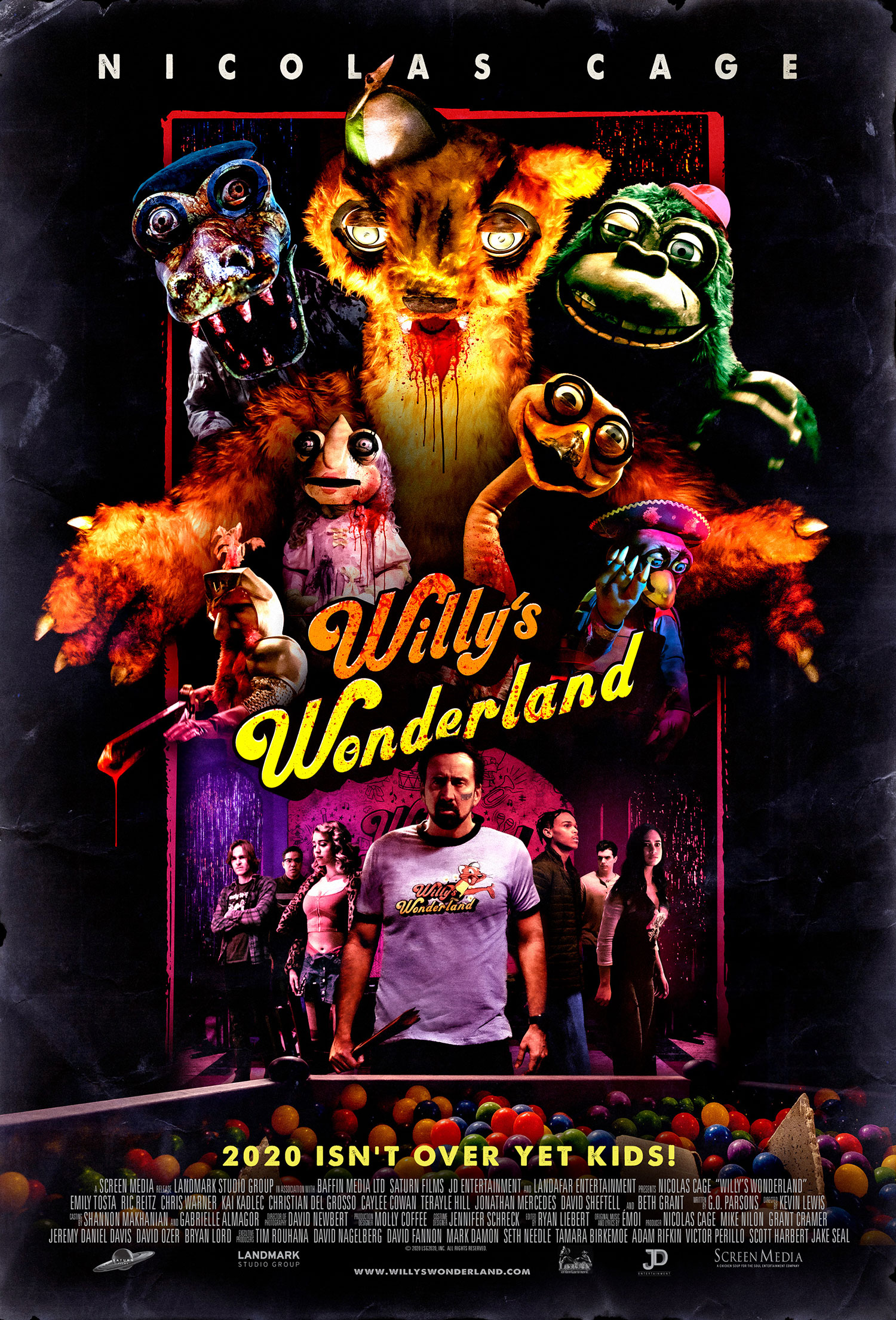Nicolas Cage is, without reservation or reflection, my favorite living actor. His days of high-brow or blockbuster Hollywood cinema are over, and this seems to be his intention. Well before he aged out of A-list roles he embraced the absurd, the strange, and the underfunded. Best of all, he always gives his all in every role he’s in. Sometimes that doesn’t work, but rarely have I ever enjoyed such consistent overacting. He’s a treasure.
This year saw the release of Willy’s Wonderland, which fits in well with Cage’s embrace of the outlandish. According to the internet, so it must be true, Cage was so enamored with the script that he chose to be one of the film’s producers, so he could have authority to prevent the story from being changed too much. As for that story…
Cage is billed as The Janitor, a Camaro-driving drifter with a serious caffeine addiction and an aversion to the spoken word. All his communicating is done with steely gazes. After he is stranded on the side of the road with car trouble, and unable to pay for repairs in cash, he is recruited to spend a night cleaning an old, rundown kids’ restaurant, in lieu of payment. The restaurant is, of course, Willy’s Wonderland, a low-rent example of a low-rent kind of eatery. Picture a Chuck E. Cheese that has been abandoned for a decade or so.
Meanwhile, a group of teenagers, led by Liv (Emily Tosta), are working up the courage to head over to Willy’s and burn the place to the ground, whether Cage is inside or not. They know exactly what kind of place Willy’s is. It’s not the mere hulk of a kids’ restaurant. It’s the site of grisly murders, carried out by the animatronic characters  on the stage in Willy’s main dining room. The animatronics are possessed by the souls of serial killers who died in a ritual suicide as the law was closing in on them. The evil has continued on, and it is this moment, coincident with Cage’s arrival, when the teens decide to act.
on the stage in Willy’s main dining room. The animatronics are possessed by the souls of serial killers who died in a ritual suicide as the law was closing in on them. The evil has continued on, and it is this moment, coincident with Cage’s arrival, when the teens decide to act.
In truth, the teens exist as fodder. Without them, the movie would just be Cage battling the animatronics in scene after scene. As an audience, we need to see some blood, and teens are always the richest source in the genre.
As for Cage’s character, he is a man of integrity. He cleans each and every room in Willy’s to spotless perfection, all the while taking care of the animatronics one by one. Like clockwork, every time he is wrapping up his work in one room, one of the furry, uncanny beasties shows up and viewers are treated to a scene of man on furry violence. These are not the best or most realistic of fights. They’re akin to watching a toddler wrestle with a stuffed animal, but they get the point across.
Willy’s Wonderland is an idea that was grander than its execution. Director Kevin Lewis (helming his first picture in fourteen years) only had about five and a half million bucks to work with. That’s more money than most of us will see in our lifetimes, but peanuts for a film. Many films have worked magic with less, but the cracks are visible in this one. Also, at times the movie slipped into a one-note farce, with scenes being largely indistinguishable from each other. Clean, kill, soda break. Pages and pages of G.O. Parsons’s screenplay could be replaced with those four words. Thank goodness viewers get that teen fodder mentioned above.
The big draw for this film, though, isn’t the conceits of the plot, but Nicolas Cage, and he delivers. I don’t know what his personal limitations are for a performance, or if he has any. What I do know is that he has made himself the personification of the absurd in these latter years of his career. Other actors have made a mess out of a role with no dialogue (I’m looking at you, Christopher Lee), and then there is Cage, managing to out-Cage himself.
This is no horror classic. It’s no better than average, I believe, but it’s a signature Cage performance, warts and all.
